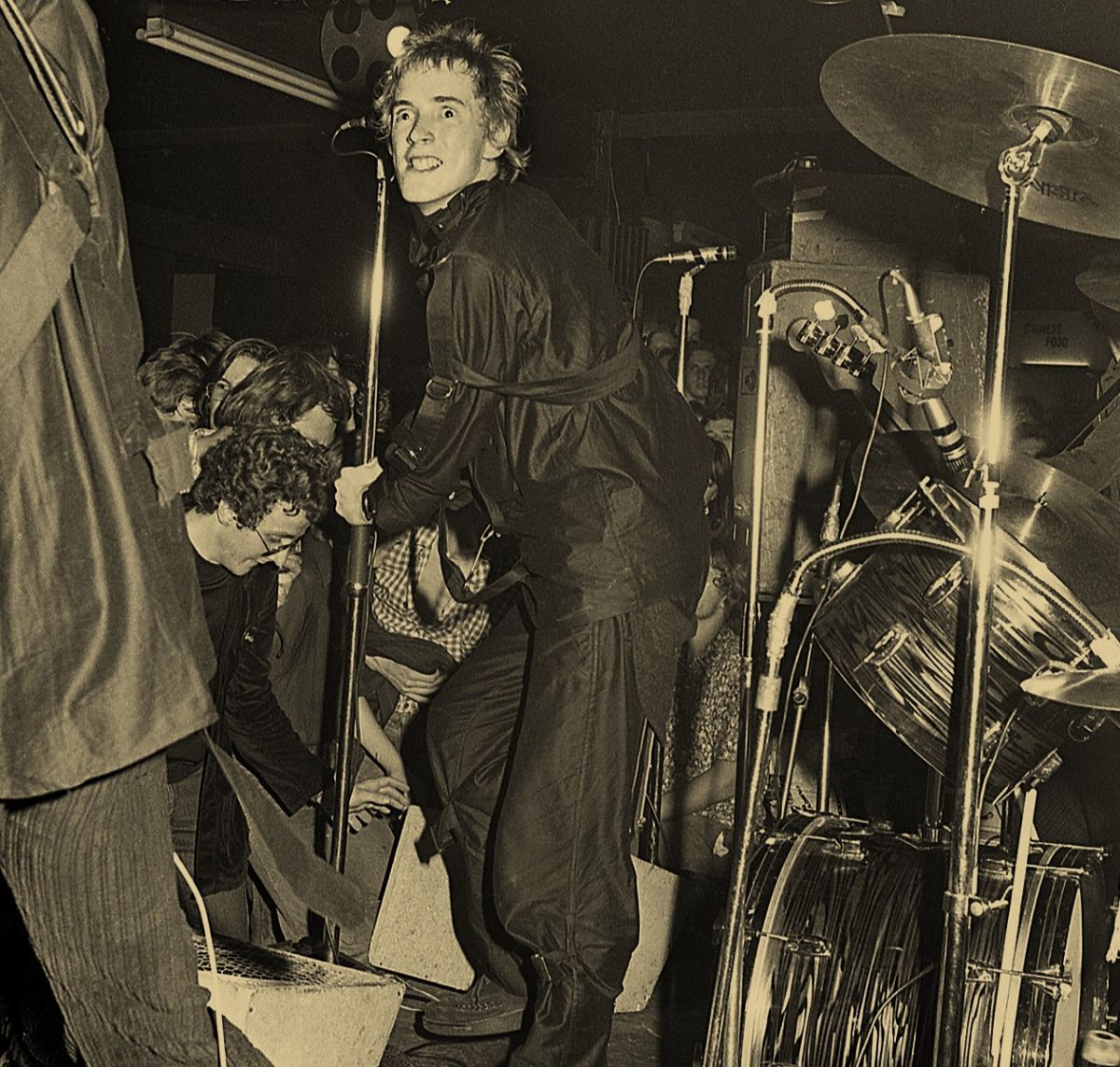Black’s inky tones have attracted stylish individuals and scene-makers throughout the past and present; worn at word-of-mouth gigs, bars, raves and club nights, found in forward-thinking boutiques, emanating from music videos and Instagram, or featured upon covetable record sleeves. Black is, after all, timeless, trend-defying and effortless. Unsurprisingly, its allure has been similarly harnessed by the most directional of fashion designers across the globe and the decades. From a deliberately restricted palette of black, their newest collections have oozed its hues for maximum impact with minimal fuss.
In the case of John Lydon, aka Johnny Rotten of the Sex Pistols, there are plenty of memorable sartorial statements which the lead singer and chief lyric writer unleashed during punk’s 1970s heyday and beyond. Here, we recall how his own highly original approach to style intersected with one of the most iconic pieces of ‘Seditionaries’ clothing, fashioned by Vivienne Westwood and Malcolm McLaren, back in 1976.
Johnny Rotten and the Seditionaries black Bondage Suit
When the Sex Pistols played at the now-iconic London music venue, The 100 Club, during their early days as punk’s ultimate provocateurs, it wasn’t just their raucous music and untamed energy that thrilled mid-1970s fans. The band had great style, too. It helped, of course, that the Sex Pistols’ manager was Malcolm McLaren, partner of Vivienne Westwood. The twosome’s ground-breaking clothing and retail experiments which took place at their ever-changing boutique at 430 Kings Road (changing its name from SEX to Seditionaries in 1976) ensured the band members were clad in the latest confrontational clobber, on or off the stage.
In particular, the Sex Pistols’ lead singer, John Lydon (aka Johnny Rotten), was no slouch in the style stakes. After all, he’d been experimenting with dyed green hair and adorning his clothes with safety pins and badges even prior to joining the band, creating an anti-fashion template which many teen punk converts would subsequently imitate. One of his most eternally cool looks has to be when he debuted the Westwood-McLaren black bondage suit, teamed with a jaunty black beret (which he borrowed from a female friend), for a trip the band made to Paris in 1976. The two-piece suit was a genius, radical feat of design; genderless, fashioned from black cotton, it was inspired by a mix of army combat gear and fetish wear. Adorned with zips and D-rings, it featured a detachable bum flap made from black towelling, not to mention a deliberately naughty zip that ran from the crotch to the arse. There were also big pockets, plus adjustable straps at the knee, enabling the wearer to restrict their own movement. The overall effect hinted at straightjackets of the sort used to compromise the physical freedom of psychotic patients. “Those trousers, our bondage trousers, were a declaration of war against repression,” McLaren later wrote in The Guardian, in 2007. Mr Rotten, meanwhile, had a sort of love-hate relationship with the attention-grabbing bondage suit which looked so good on him. In his 2014 autobiography, Anger Is An Energy, he recalled it as, “the most restricting, disgusting, annoying thing to be in. I felt really hateful in it. I loved it!”
Back in the 70s, a shocked older generation couldn’t comprehend why wayward youths would wear such seemingly-absurd attire. Needless to say, this disapproval only made the bondage suit even more desirable to rebellious young punks, while ensuring brisk business at the Seditionaries store. Those who couldn’t afford the Westwood-McLaren original would improvise their own version of the bondage suit – using second-hand clothes, sewn-on zips and, perhaps, a belt clasped around the knees. (This DIY approach to style became one of the most exciting aspects of punk). Nowadays, the prototype of the black bondage suit is housed within the V&A Museum’s permanent Textiles and Fashion collection. A further acknowledgement of its originality and brilliance.
Johnny Rotten performing at the 100 Club with the Sex Pistols at the 1976 Punk Special
